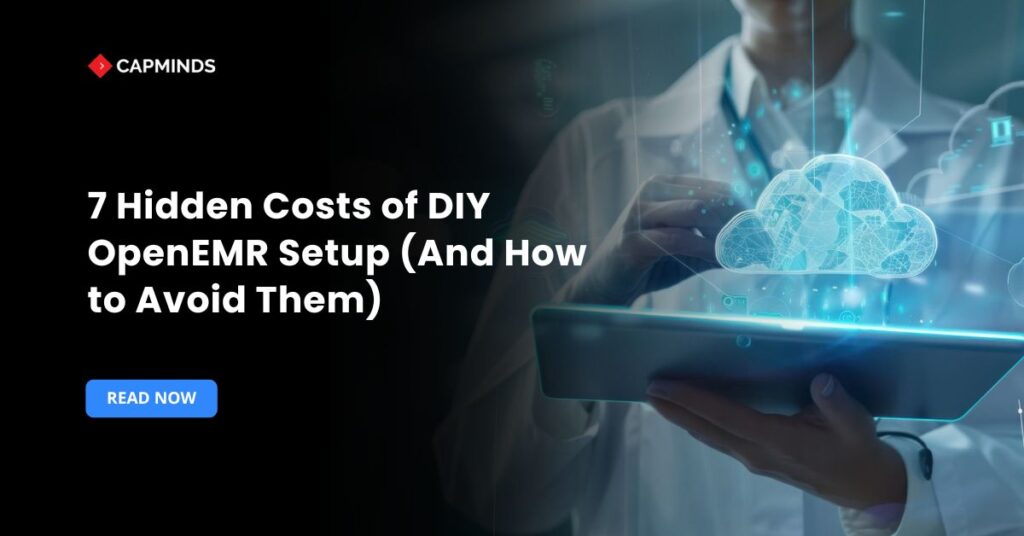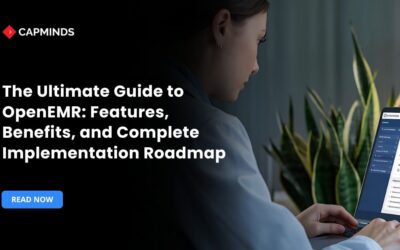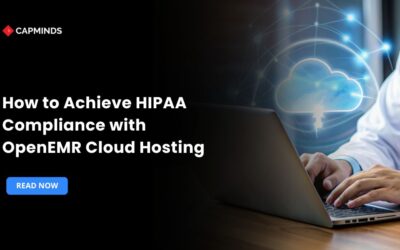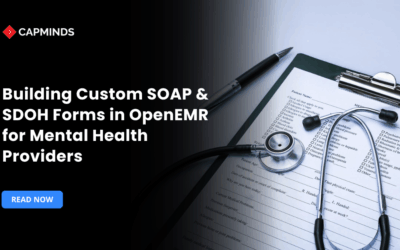7 Hidden Costs of DIY OpenEMR Setup (And How to Avoid Them)
OpenEMR’s appeal as a free, open-source electronic medical record (EMR) system makes it attractive to budget-conscious clinics and hospitals. It’s especially tempting to deploy OpenEMR on a cloud server (like AWS or Google Cloud) yourself and avoid paying a vendor.
However, many clinic owners and IT admins discover that “free” can come with hidden costs. From surprise cloud fees to compliance pitfalls, a DIY cloud OpenEMR can cost more in the long run if you’re not prepared. In this post, we highlight seven hidden costs of self-managing OpenEMR in the cloud and how to avoid or mitigate each one, so you can make an informed decision for your healthcare facility.
1. Unpredictable Cloud Infrastructure Costs
The Challenge
Estimating cloud hosting expenses isn’t as straightforward as selecting a $ 5-per-month server. In reality, cloud providers charge for many resources beyond the basic virtual machine.
- For example, one OpenEMR user found that just 8 days of light usage nearly consumed Amazon’s free tier limit of 2,000 input/output requests.
- A community expert explained that AWS “charges for every single disk operation,” so even routine EMR actions generate dozens of database queries and storage calls that add up quickly.
- This means a busy practice can see cloud bills climb higher than expected.
How to Avoid Surprise Bills
Start small and monitor your cloud usage diligently. Utilize the budgeting tools and alerts provided by your cloud provider to monitor operations, storage, and network transfer costs effectively. It may help to use reserved instances or long-term plans (as one clinician did by prepaying 3 years to cut costs down to ~$40/month), but only if you’re confident in your long-term needs.
To ensure nothing is overlooked, include auxiliary expenditures from the beginning as well. You may keep monthly expenses predictable by budgeting for these fees and making the most of your cloud resources (e.g., by rightsizing your server or removing unnecessary backups).
Related: Get Started with OpenEMR on AWS Express: Easy Installation Guide
2. Billing and Clearinghouse Service Fees
The Challenge
Handling insurance billing with OpenEMR often requires a clearinghouse or billing service integration. This is something many DIY implementers don’t budget for initially.
While OpenEMR can generate claim files, you typically need to sign up with a third-party clearinghouse to submit electronic claims and verify insurance eligibility. These services aren’t free.
One community member shared that they pay about $10 per month for insurance eligibility checks and $45 per month to submit claims through Office Ally. Charges can vary by clearinghouse and are sometimes on a per-claim or per-provider basis. If you didn’t anticipate this, it’s an added monthly cost on top of your hosting.
How to Avoid/Minimize It
Research your billing options early. Some clearinghouses offer basic plans that are free or cheaper if your claim volume is low, or if you meet certain conditions. If you truly want to avoid a clearinghouse fee, note that you can submit claims manually via major insurers’ online portals, as one OpenEMR user points out, a clearinghouse is not strictly needed “unless it is for convenience”.
Using payer portals is more labor-intensive for your staff, but it can save money for a very small practice. Another approach is to shop around: there are services and modules in the OpenEMR community that integrate claims processing and might bundle costs differently.
The key is to factor some solution into your plan, whether it’s staff time for manual billing or a monthly fee for a clearinghouse, so that insurance billing doesn’t become a bottleneck or an unexpected expense.
Related: Step-by-Step Guide: Setting Up OpenEMR Billing for Maximum Efficiency
3. Laboratory Interface Costs and Delays
The Challenge
Integrating lab results into OpenEMR is a huge convenience; no one wants to manually scan and attach lab reports if it can be automated.
But setting up these lab interfaces can introduce hidden costs in both money and time. In some cases, labs charge a one-time interface setup fee plus monthly maintenance fees to send orders and receive results electronically.
- One clinician researching DIY OpenEMR found that “each lab will charge a large one-time fee, and then have a monthly fee as well” for direct integration.
- Even when a lab interface is ostensibly free, the process can be cumbersome.
- For example, Quest Diagnostics’ interface for OpenEMR had no direct cost to set up, but initial integration can take weeks or even months of coordination and testing.
That delay is a form of cost, too, during which you might not have electronic lab results available.
How to Avoid/Mitigate It
Plan your lab integrations strategically.
- Before you go live with OpenEMR, first inquire about any interface programs, costs, and requirements from your most popular lab providers.
- You can budget or think about other options if you are aware of the prices up front.
- You may use community-driven solutions in specific situations.
- For example, OpenEMR developers have worked on integration hubs that connect to multiple labs through one interface.
Such solutions, once mature, could reduce the need for individual costly lab contracts. If an interface is free but slow to set up, start the paperwork early and have a contingency for lab results in the interim.
Finally, only integrate labs that you truly need; each additional connection adds maintenance overhead. By choosing the right approach for your clinic’s size, you can avoid paying for unnecessary lab integrations or getting stuck in a lengthy setup you weren’t prepared for.
Related: How to Enable Automated Lab Orders and Results in OpenEMR Using Quest APIs
4. E-Prescribing Module Fees
The Challenge
Another crucial function that isn’t included in your OpenEMR installation is e-prescribing. A certified e-prescribing service or module is usually needed in order to write prescriptions in OpenEMR and deliver them to pharmacies.
- Many OpenEMR users turn to the Weno eRx module or similar services to enable this functionality.
- While Weno is relatively low-cost, it isn’t cost-free: for one provider, there’s an initial enrollment fee and then roughly $3 per month to use the service.
- If you have multiple prescribers in the practice, that monthly fee may be per provider, so it scales up accordingly.
- Other e-prescribing integrations often carry higher fees, which can be charged monthly or per prescription.
- If you assumed “we’ll just use OpenEMR for prescriptions too,” you might not have realized a third-party service is needed, representing yet another recurring cost.
How to Avoid/Manage It
When budgeting for your DIY OpenEMR, include an e-prescribing solution in the plan. Check which eRX modules are compatible and what they charge. The Weno module, for example, is popular because of its low monthly fee and straightforward integration.
There may be other community-supported options as well, so ask on the forums or review the OpenEMR documentation for e-prescribing recommendations. In any case, consider the eRX fee unavoidable.
The best course of action is to select the most economical alternative that satisfies your requirements, then factor in those few dollars each month for each provider when calculating your expenses. You may prevent any surprises and make sure your providers can transmit prescriptions electronically right away by choosing a reputable low-cost e-prescribing module and being aware of its pricing structure.
Related: Which e-prescribing Service in the USA is Suitable for OpenEMR?
5. Maintenance, Updates, and IT Overhead
The Challenge
There are recurring maintenance requirements when installing OpenEMR on a cloud server, which can result in unanticipated time and/or financial expenses.
You are your IT department when you run your own OpenEMR. You will be responsible for updating the server OS and database, applying security patches and version upgrades to OpenEMR itself, keeping an eye on performance, and troubleshooting problems as they appear.
As one community member put it, a lot depends on “how IT-literate you are”. Tasks like establishing web servers, setting up Docker containers, and debugging error logs can take a lot of time or even put an end to your practice if you’re not extremely tech-savvy. Inexperienced administrators may unintentionally make a mistake that renders the system insecure or causes outages.
How to Avoid Issues
Have a plan in place for how you will manage upkeep.
- If you have an IT-savvy employee, assign them some of their time to handle security, backups, and upgrades for OpenEMR.
- Make sure they interact with the OpenEMR community; you don’t always need to hire an expert to troubleshoot problems because the forums and documentation can be a lifeline.
- To avoid unforeseen delays, it is advisable to plan frequent maintenance periods to install patches and upgrades outside of clinic hours.
- Before a crisis arises, think about budgeting for expert assistance if no one in-house possesses the necessary abilities.
For example, you might retain a retainer with an OpenEMR support provider for regular check-ups or employ a consultant to handle the first deployment correctly and teach you basic maintenance.
An outdated EMR can break or become susceptible, thus it is not a good idea to neglect maintenance in order to save time. Maintaining the health of your system requires investment, whether in the form of paid support or self-learning. You may prevent the hidden expense of a neglected system that malfunctions when you need it most by recognizing and planning for the IT overhead.
6. Security and HIPAA Compliance Responsibilities
The Challenge
Healthcare data is highly sensitive, and when you host OpenEMR yourself, especially on a cloud platform, all the security and HIPAA compliance duties fall on you.
This is an area where “unknown unknowns” can be costly. For example, if you deploy OpenEMR on AWS or another cloud, you must sign a Business Associate Agreement with that provider and ensure the environment meets HIPAA requirements.
- A BAA is a legal necessity when protected health information is stored with a third party.
- Many DIY users aren’t initially aware of this step.
- Compliance also means you need to enforce strong access controls, data encryption, regular security audits, and proper data backup/disaster recovery plans.
These aren’t direct fees like a service charge, but if done wrong, the “cost” could be a data breach or violation penalties. Unlike using a professional cloud EMR service that might include baked-in compliance and security measures, with OpenEMR, you are effectively the security officer.
- One comparison noted that with OpenEMR, security and compliance must be managed by the user.
- This hidden cost manifests as the time and possibly money spent to set up things correctly, for instance, configuring firewalls, obtaining SSL certificates, and possibly purchasing extra tools or audits to ensure HIPAA compliance.
- The ultimate hidden cost here is risk: a misconfigured server could expose patient data, leading to hefty fines that no clinic wants to face.
How to Stay Secure
Treat security and compliance as non-negotiable priorities in your DIY project. If you’re using a cloud provider, immediately execute a BAA with them. It’s mentioned that keeping PHI out of the cloud entirely avoids this paperwork, but if the cloud is your choice, the paperwork must be done. Next, follow best practices: use encryption everywhere, and restrict access to the server.
It’s wise to consult HIPAA security checklists; you might even hire a security consultant for a one-time audit of your setup. Regularly back up your OpenEMR data to a secure location. Also, keep logs and monitor for any unusual activity. While this all sounds daunting, breaking it into a checklist can help.
The key is not to assume your system is secure by default; you must actively secure it. The cost of prevention is far lower than the catastrophic cost of a breach. By building compliance steps into your deployment plan, you’ll avoid the nightmare scenario of violating patient privacy due to an oversight.
7. Downtime Risks and Limited Support
The Challenge
When you go the DIY route, you do not have a dedicated support team on call if something goes wrong. If your OpenEMR goes down or glitches, your clinic is essentially on its own to fix it. This can translate to longer downtime in the middle of a workday and frantic scrambling for solutions.
The open-source community does offer help through forums, but that’s not the same as having a vendor support contract with guaranteed response times. A reviewer of OpenEMR noted that its “lack of professional support” is a potential deal-breaker for some practices.
What this means is that if your server crashes, or you encounter a bug you can’t easily resolve, you might have to post on forums and wait, or hire emergency IT help at a premium rate. Neither is ideal when patients are waiting. Downtime isn’t just an inconvenience; it can lead to canceled appointments, frustrated providers, and even patient safety risks if records aren’t accessible. This is a hidden “cost” often forgotten: the risk and impact of system unavailability.
How to Mitigate Downtime
First and foremost, have a backup and recovery plan. This means automated daily backups of your OpenEMR data and a tested method to restore that data onto a fresh server if needed. Test your backups periodically; a backup is only good if you know it can be successfully restored.
Secondly, consider setting up monitoring on your cloud instance so you’re alerted to issues before they snowball. It’s also a good idea to identify an emergency go-to expert ahead of time: this could be a contracted IT service or an experienced OpenEMR consultant you have on standby.
While you may not want to pay for full managed support, having someone you can call for a quick assist can drastically reduce downtime. Schedule any major changes during off-hours when possible, so if something does break, it won’t immediately disrupt patient care.
CapMinds OpenEMR Services
DIY OpenEMR cloud setups often reveal more challenges than expected, from surprise hosting bills to compliance gaps and costly downtime. With CapMinds, you gain a trusted partner who ensures your OpenEMR environment is secure, optimized, and future-ready.
Our expert team eliminates the risks of hidden costs by providing end-to-end professional services, tailored to your practice’s needs. Our OpenEMR Services include:
- OpenEMR Customization & Integration – align workflows with your clinical needs.
- Cloud Deployment – reliable, HIPAA-compliant hosting on secure cloud platforms.
- Server Configuration & Optimization – performance tuning for speed and stability.
- Database Setup & Migration – secure transfers, mapping, and normalization.
- Ongoing Support & Maintenance – proactive monitoring, updates, and troubleshooting.
With CapMinds, you don’t just deploy OpenEMR; you ensure it works seamlessly for your staff and patients while keeping costs predictable. Partner with us to build a hassle-free OpenEMR system that lets you focus on patient care, not IT struggles.




